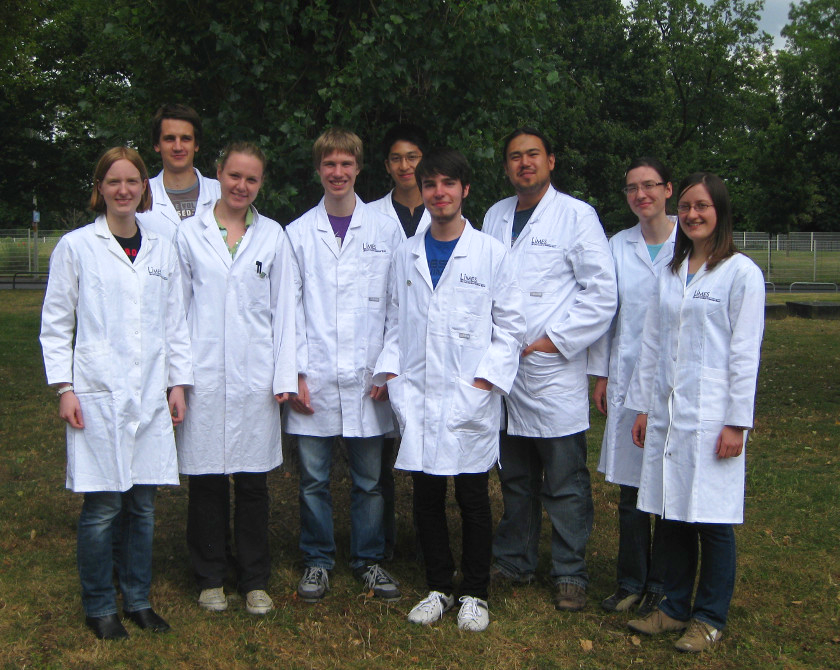Team:Bonn
From 2012.igem.org
(Updated intro text) |
|||
| Line 24: | Line 24: | ||
[[Image:Bonn_lovlogo.png|right|200px]] | [[Image:Bonn_lovlogo.png|right|200px]] | ||
| - | Fusion protein design has always been time- and design-intensive, to say the least. We are developing and characterizing a fusion construct containing a light sensitive domain, providing easy coupling and light activation of proteins of interest | + | Fusion protein design has always been time- and design-intensive, to say the least. |
| + | We are developing and characterizing a fusion construct containing a light sensitive domain, | ||
| + | providing easy coupling and light activation of proteins of interest to investigators, thus | ||
| + | developing a protein-level light-induced knockout. | ||
| + | Using the LOV (Light, Oxygen, Voltage) domain commonly found in plants, where it enables light-directed growth, we are establishing guidelines for coupling many interesting proteins to the LOV domain, which allows control of protein activity through blue wavelength light. | ||
| - | + | Designing our reversible knockout at protein level allows quick response times (2.2 microseconds activation time, 85 seconds de- | |
| - | + | activation time). A device of that kind could be of great importance as a tool for disinfection on a laboratory scale or mutant selection via blue light. Further potential applications of our LOV fusion system might include bioreactor regulation or site-specific drug activation. | |
| - | + | ||
[[Image:Bonn_team.png|right|thumb|iGEM Team Bonn]] | [[Image:Bonn_team.png|right|thumb|iGEM Team Bonn]] | ||
Revision as of 17:30, 25 September 2012
| Home | Team | Project | Activities | Parts Submitted to the Registry | Notebook | Safety | Attributions | Sponsors |
|---|
This page is currently under construction.
To visit our website at University of Bonn click [http://igem12.uni-bonn.de/en/ HERE].
Fusion protein design has always been time- and design-intensive, to say the least. We are developing and characterizing a fusion construct containing a light sensitive domain, providing easy coupling and light activation of proteins of interest to investigators, thus developing a protein-level light-induced knockout.
Using the LOV (Light, Oxygen, Voltage) domain commonly found in plants, where it enables light-directed growth, we are establishing guidelines for coupling many interesting proteins to the LOV domain, which allows control of protein activity through blue wavelength light.
Designing our reversible knockout at protein level allows quick response times (2.2 microseconds activation time, 85 seconds de- activation time). A device of that kind could be of great importance as a tool for disinfection on a laboratory scale or mutant selection via blue light. Further potential applications of our LOV fusion system might include bioreactor regulation or site-specific drug activation.
 "
"


